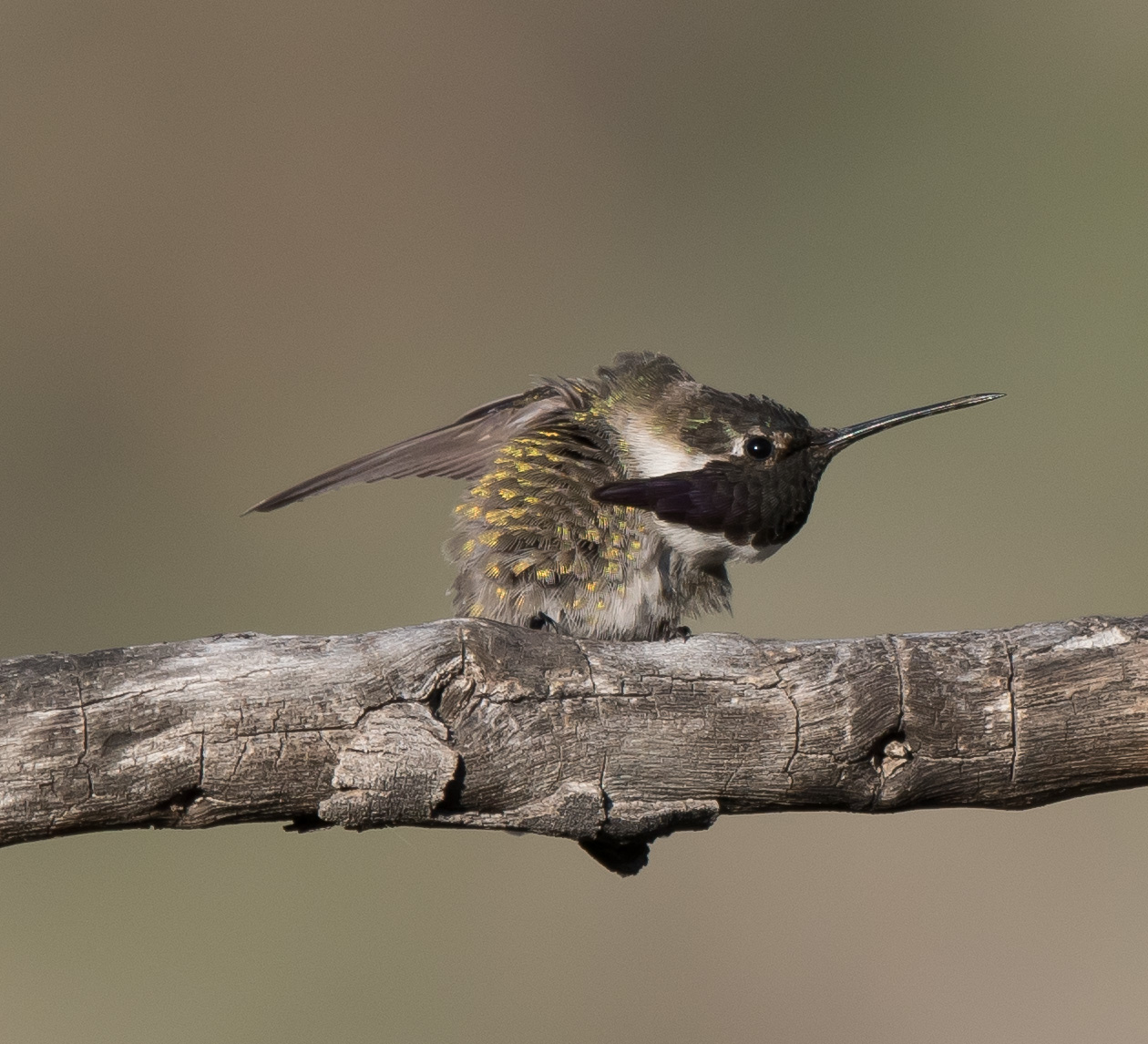The weekend before Christmas, I teamed up with Chris Rohrer, Babs Buck, and Magill Weber to chase an Arizona rarity up above the Mogollon Rim in Navajo County of Arizona. A Carolina Wren had been making an appearance at a feeder in Overgaard, AZ. This was only the 4th confirmed sighting of this species in Arizona, so it is a pretty special bird. We knew it was going to be cold in the higher elevations and we planned accordingly. There was plenty of snow on the ground as the winter weather so far in Arizona has been a little on the wet side, especially in the high country where quite a bit of snow has already fallen and the ski resorts are in full operation.
We arrived at the location and spotted the yard and feeder and managed to get a short, quick look at it briefly and then it took flight and did not return during our stay. During the time we were waiting and hoping for its return, we took advantage of the many other birds around in this snowy winter wonderland. Steller's Jays were raiding the feeders while a flock of over 100 Pinyon Jays were moving though the trees behind us just beyond a fence that blocked any closer access to them.
Steller's Jay
Pinyon Jays
Pinyon Jay
Of course Dark-eyed Juncos were just about everywhere. This is a bird that consists of several sub-species with variable coloration and markings. On this day, we were quit fortunate to see at least 5 of the sub-species; Oregon, Gray-headed, Pink-sided, Red-backed, and Slate-colored. We did not see them all in the same place, but at various locations and it is fun to note the differences in them. Below are photos of the Red-backed and the Slate-colored.
'Red-backed' Dark-eyed Junco
'Slate-colored' Dark-eyed Junco
On the return trip we decided to visit the Tonto Creek Fish Hatchery which is always a great place to visit and this trip did not disappoint us in any way because one of the very first birds we spotted when we pulled into the parking area was an American Dipper! This is quite a unique bird and it has found a niche in the wonderful world of nature. They feed on aquatic invertebrates by walking and swimming under water in cold mountain streams. They are most entertaining and it was hard not spend the entire rest of the day with them. They have to be one of my top ten most favorite birds.
American Dipper
While we were enjoying the American Dippers and the show they were putting on for us, we had a pair of majestic adult Bald Eagles acting as sentinels watching over us in the tree above our heads.
Bald Eagles
As we were leaving this area and about a ½ mile down the road, we found another Bald Eagle. This one was a third year immature. Bald Eagles take 4 years to reach their full adult plumage, so it is always exciting to see a youngster such as this one surviving in the wild.
Bald Eagle - Immature
Another fascinating bird is the Brown Creeper and one of them paid us a visit as well. This bird, with its curved needle-like bill, will usually fly to the base of a tree and work its way upward in the spiral, probing for insects and larva in and under the bark of a tree. Then it will fly to the base of a neighboring tree and do the same thing. Always tough to photograph as they do not sit still and their brown coloration sometimes blends in with the bark of a tree to make it hard to zoom in with a good focus.
Brown Creeper
One other bird that we encountered at this magical place was a Pacific Wren. They do not like to come out and show themselves very much, so photos were not too great. However, this bird was quite a milestone for Chris as it was his 700th life bird, which is a big milestone and it is a great bird to claim for number 700. A big congratulations to Chris on his achievement!
Pacific Wren
The 700 Club!
One last stop on the way home was Green Valley Park in Payson. We added several waterfowl species to our daily tally, including a couple of Great Scaup. They can be difficult to ID when Lesser Scaup are so much more common in Arizona. But there was no doubt on these females that we saw, with the smoothly rounded head and the bill with a wide black nail at its tip.
Greater Scaup
A couple of male Hooded Mergansers were also present and I was able to capture an adequate photo of one of them with its prized catch.
Hooded Merganser
It was a one day trip that was filled with a lot of special birds with great company along for the ride!
























































